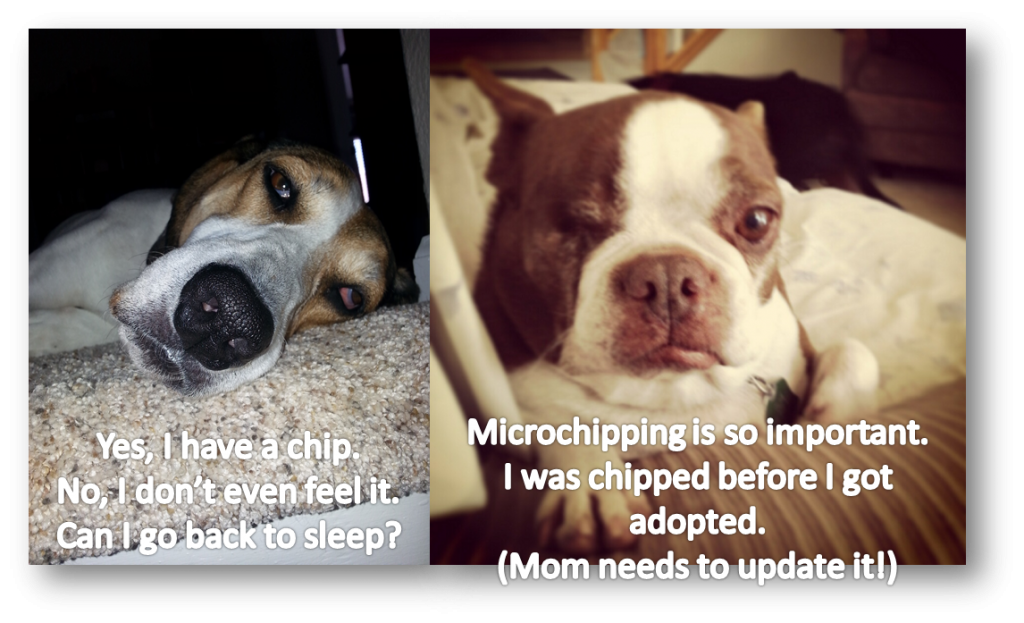‘She Has A MicroChip’
Post by BlogPaws CEO Yvonne DiVita
This post is about microchips. Raise your hand if your pets are microchipped. That includes cats. Cats that go out, especially. I don’t know about other pets but I should think you could also microchip your ferret, guinea pig or other furry creature. Reptiles… you need to ask a vet that question.
I was reminded of this topic the other day when I received an email from our friends at Found Animals. They wanted to let me know that 8/15 is National Check Your Chip Day. Our dogs are microchipped, just to put that out there. But, not our cat. I’m now wondering if we should microchip her, just in case she ever sneaks out.
The note from Kathy Kwon at Found Animals gave us a check list of important things to know about microchipping. I was impressed with the information and just have to share it here:
Chipping Your Pet: 6 Important Steps
Brought to you by Found Animals
August 11, 2015
- Before microchipping your pet, have your pet scanned at a vet’s office or shelter to make sure your pet is not already chipped. Ask that the scan be done with a “universal scanner” (one that can read all three chip frequencies) so the chip isn’t missed.
- If your pet is already chipped, search petmicrochiplookup.org to get contact info for the chip’s registry. Remember, no matter which company sold the chip, you can always register it for free at www.found.org.
- If the scan reveals that your pet is not chipped, proceed with the microchip implantation and obtain a copy of the paperwork, which should include your pet’s unique microchip
- MOST IMPORTANTLY, register your pet’s microchip number as soon as possible at www.found.org. Think of the chip number as a social security number for your pet – it must correlate with information in a database to be useful. If your pet is chipped but the chip is not registered to you, it is unlikely your pet will be traced back to you if lost.
- Update your information in the chip registry every time you move or change your phone number. If your pet gets lost and the chip is registered to a number you had three moves ago, chances of reunification are slim.
- Microchip contact information is only accessible after a pet has been scanned by a universal scanner and the number searched in a registry database. If a Good Samaritan finds your pet on the street, the first place he’ll look to find contact info is your pet’s collar. Always keep a collar on your pet with clearly readable ID bearing your current contact information.
I hope you read and re-read and then write down the #5. As Tom and I prepare for our move, I’m realizing I never updated the chips from our last move. While that’s not a problem right now, as I can update things properly when we’re in our new house, I should have done so last time we moved. I am a bad, bad, bad pet parent. But, I will make amends.
We see a good many stories on TV about pets being reunited with their pet parents, after being lost for one reason or another. And not a few stories about dogs returned years later, when a good vet or shelter worker says, “Let’s see if this dog is chipped!” Let’s all take a lesson from those news stories and learn how important microchipping your pet is.
Tell us about your dog or cat or other pet, with a microchip. (pictures would be fab! love to see pictures!)




